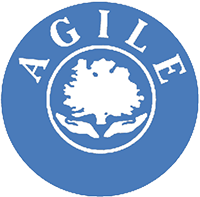The last NICE guidelines were back in 2013 and although they did endorse some resources the recommendations remained the same. The new NICE guidelines are out so take a read here.
The new 2025 recommendation is that anyone who needs comprehensive assessment and management should be considered for an exercise intervention delivered by appropriate trained professionals, be progressive and tailored to the persons specific needs, preferences, goals and abilities, focus on functional components related to the person’s risk of falls (e.g. balance, coordination, strength and power), include regular exercise progress reviews and be delivered in such a way, including the duration of programme, to bring about behaviour change related to physical activity and sedentary habits.
There is discussion about education and flexibility in delivery to offer choice of group or individually supported exercise. For those who do not need a comprehensive assessment and management programme (had one fall or who have gait and balance deficits, intermediate risk as per the World falls guidelines), they also recommend offering a falls prevention exercise programme. For older people at risk of a fall in hospital, if the person has the ability, they should be encouraged to exercise or regularly mobilise and be offered support to reduce their risk of a fall after discharge from hospital. For those residing in care homes, exercise should be tailored to their abilities and preferences and delivered on an individual or group basis.
Lack of detail on dose or intensity of exercise
There is, however, no detail on dose, duration, intensity or frequency which will just contribute to the implementation of ineffective (cheaper) programmes that do not have sufficient dose for effective changes in falls risk factors and ultimately falls rate [see Sherrington Cochrane Review].
The World falls guidelines also recommend balance challenging and functional exercises (eg. sit to stand, stepping) but give the vital detail of sessions three times a week or more which are individualised, progressed in intensity for at least 12 weeks and continued longer for greater effect. They also recommend inclusion, when feasible, of Tai Chi and/or additional individualised resistance strength exercise. It would have been helpful for the 2025 NICE guidelines to have given dose recommendations to ensure return on investment and effective outcomes for patients.
In the 2025 NICE guideline there is no discussion about regaining the skill of getting up from the floor although there is mention of education on what to do if they have a fall, including how to get up and when to seek help. The World falls guidelines make specific mention of regaining the skill of getting up from the floor to avoid long lies, reduce concerns about falls and potentially reduce unnecessary ambulance call outs. Up to 65% of fallers attended by ambulance crews are “lift-assists” where paramedics help an individual to their feet without further medical attention, yet 47% will call emergency services again within two months.
Interestingly, in the 2013 NICE guideline there was specific mention that brisk walking was not recommended and there was insufficient evidence to support low intensity exercise programmes and untargeted group exercise. This added detail in the old guideline may have gone some way to supporting best practice currently. However, in the UK there has been a huge growth of strength and balance programmes offered as falls prevention programmes, some delivered by individuals that are not trained to be able to adapt exercises appropriately to functional status and comorbidities, many are seated ‘gentle’ exercise programmes or dance-based interventions (which have no evidence), or are ‘large groups of 20 or more people which does not allow tailoring, and some use videos online that do not individualise nor progress in challenge or intensity over time (correspondence to the National Falls Prevention Coordination Group). These are unlikely to be effective compared to programmes which are evidence based, sufficiently balance challenging and progressive over time. The World falls guidelines give detail about who is an appropriately trained professional, leaving no ambiguity that carers, volunteers and personal trainers with little or no training specific to tailor exercise for older people at risk of falls should not lead falls prevention exercise programmes.
So, in conclusion, the updated NICE falls guidelines, specifically in relation to exercise delivery, fall short of the mark compared to the detail and given in the World falls guidelines and may still lead to ineffective programmes being offered to people at risk of falls.




